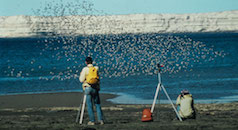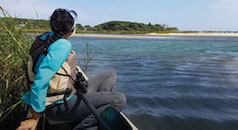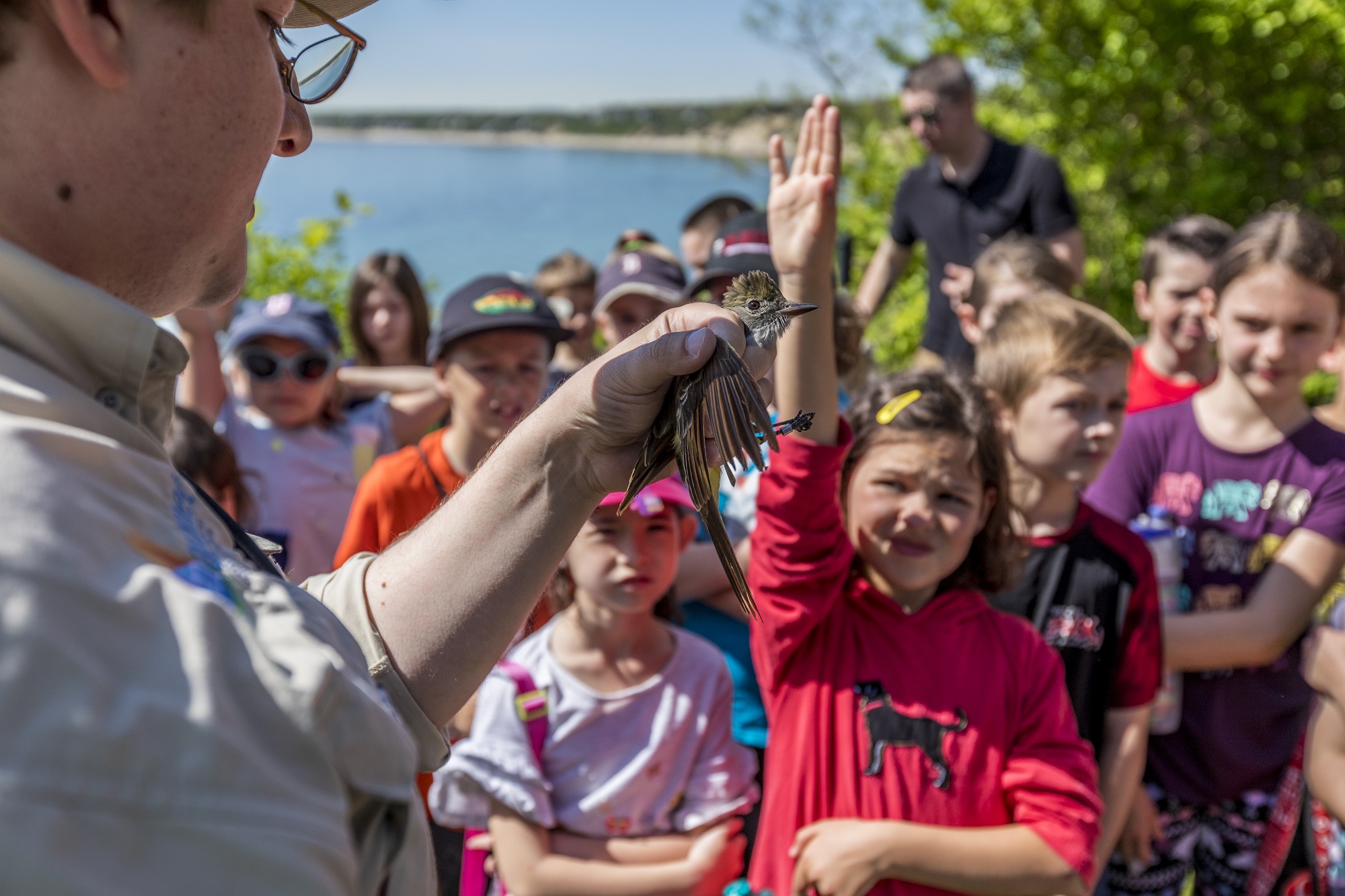The iconic Red Knot shorebird B95 – named for the number on his leg band – has been spotted again on the Delaware Bay.
B95 is at least 20 years old, making him the oldest Red Knot on record. He is nicknamed “Moonbird” because in his lifetime he has flown the equivalent of the distance between the earth and the moon and at least halfway back.
He was spotted May 16 in Delaware’s Mispillion Harbor. He then flew over to the New Jersey side of the Delaware Bay, making appearances at Cooks Beach, Fortesque, and Kimbles Beach.
B95 was featured in a book by author Phil Hoose last year, the critically-acclaimed “Moonbird: A Year on the Wind with the Great Survivor B95.”
“B95 has become the standard bearer for the conservation of shorebirds, which are in decline worldwide,” said Shorebird Recovery Project Director Charles Duncan. “This astonishing little individual carries a message about the importance of caring for the coastlines and wetlands of the entire hemisphere.”
B95 is one of tens of thousands of Red Knots who rely on the Delaware Bay as a migratory stopover location. The Bay became the first designated site in the Western Hemisphere Shorebird Reserve Network in 1986. Each May, the birds arrive to the Bay emaciated, spending several weeks feeding on protein-rich horseshoe crabs to gain enough fat and rebuild enough muscle to refuel the next leg of their migration.
Seventy to 80 percent of the rufa Red Knot subspecies stops at the Bay each spring as they make their way from Tierra del Fuego, Argentina, to their breeding grounds in the Canadian Arctic – a one-way trip of nearly 10,000 miles.
In the past 20 years, the number of Red Knots at the Delaware Bay has plummeted. Before the 1980s, there were between 100,000 and 150,000 Red Knots stopping at the Bay during their northward migration. That number has since decreased by about 80 percent.
“Research has shown that the primary threat to the Red Knot is the overfishing of horseshoe crabs and the resulting scarcity of horseshoe crab eggs at Delaware Bay,” Duncan said. “With a depleted supply of horseshoe crab eggs, it is difficult for Red Knots to gain enough weight to make it to the Arctic and breed successfully.”
The Delaware Bay’s horseshoe crab population has decreased drastically since harvesting the crabs as bait for eels and whelk began in the 1990s. To date, limits on horseshoe crab harvest have been ineffective, with little if any detectable recovery of their populations.
Each May, a team of researchers from around the world spends several weeks banding and researching Red Knots and other shorebirds at the Delaware Bay. The team is led by Larry Niles, wildlife biologist for the Conserve Wildlife Foundation of New Jersey and Amanda Dey, senior biologist with the Endangered and Non-game Species Division of N.J. Fish and Wildlife.
They catch and band Red Knots, Ruddy Turnstones and other shorebird species, recording each bird’s bill length, wing length and weight and taking feather and blood samples to learn more about survival rates and migratory routes. Some of these researchers have been returning to the Delaware Bay each spring for nearly two decades.
After Hurricane Sandy, researchers and conservationists were worried about how damage to Delaware Bay beaches would impact Red Knots and other shorebirds.
“Hurricane Sandy wiped out 70 percent of the Delaware Bay’s horseshoe crab breeding habitat,” Niles said.
Just two months ago, Niles led the effort to secure funding for a $1.4 million emergency beach replenishment project to restore horseshoe crab breeding habitat. Debris was removed and sand was added at five Delaware Bay beaches.
Preliminary results from an aerial Red Knot survey conducted at the Delaware Bay this week were promising. 26,000 Red Knots were counted, which is almost exactly what the number was last year.
“Having the population hold steady for the year when the beaches were devastated by Hurricane Sandy is a great success,” Duncan said. “We feared a real disaster, a total collapse of horseshoe crab breeding and a devastating shortage of food for the shorebirds.”
Duncan applauded “all of the people who worked so hard to get the beaches restored in the nick of time.”
Last year, Manomet and a group of conservation organizations launched an outreach campaign to connect the human population of the Delaware Bay region to their shorebird neighbors.
“Manomet and our partners at Delaware Bay are building a constituency of people who care about the Bay, reaching out to audiences we’ve never talked to before and gaining new supporters for the Bay’s protection and for shorebird conservation,” Duncan said. “B95’s incredible story provides people with an emotional connection. Through it, people see how remarkable these birds are and how their community is an irreplaceable part of the big story. Our job is to help them see how conservation of the Bay’s shorebirds and horseshoe crabs benefits their communities and the overall quality of life on the Delaware Bay.”
Duncan said that the Delaware Bay outreach has importance beyond the region because of ground-breaking new approaches to conservation, with positive messages delivered using professional marketing and communications tools.
“The fact that B95’s story has been in press articles – told in three languages – from Canada to Argentina and from Chile to London shows how strongly people respond to this story of hope and connection,” Duncan said.
To learn more about these incredible shorebirds and what you can do to help conserve their populations, visit http://moonbirdfund.org/.
Like the Celebrate Delaware Bay facebook page to stay up to date on the shorebird research efforts at the Delaware Bay.
– Haley Jordan





 Back to all
Back to all